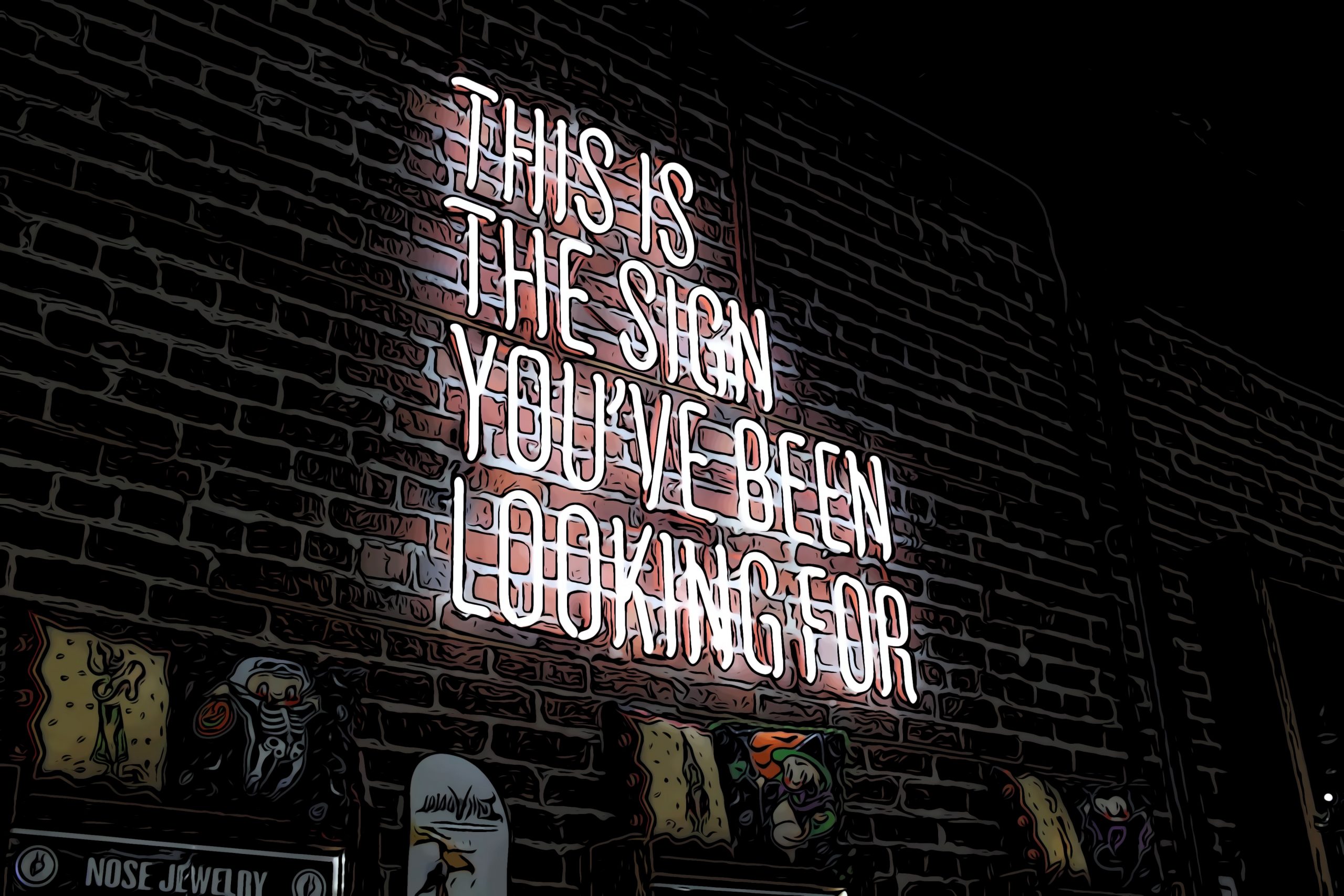This Post in a Single Paragraph: After surveying the About Me pages of eleven non-fiction authors I admire, I’m going to revise my own About Me page to be:
- more personal,
- more focused on the reader’s needs,
- better at connecting people with the work I do that can help them,
- more effective at showcasing my past work, and
- better at pointing to passion projects that will intrigue people or suggest obsessions we might have in common.
After realizing that the dusty old About Me page on MarkMcElroy.com sucked, I decided to revise it. As I started drafting new content for that page, I found myself wanting to know more about what goes into writing an effective About Me page.
Rather than Google “How to write an effective About Me page,” I decided to look at the About Me pages belonging to non-fiction authors who met these qualifications:
- I admire them and their work.
- I’ve purchased and read their books.
- In addition to being authors, they position themselves as being available for coaching, workshops, or speaking engagements.
Next, I opened my Kindle and made a list of the first eleven authors who met those qualifications. (Names in the list below link to the related About Me pages, while book titles are Amazon Affiliate links to the books themselves.)
Rob Fitzpatrick – Write Useful Books
Aaron Dignan – Brave New Work
Priya Parker – The Art of Gathering
James Clear – Atomic Habits
Austin Kleon – Show Your Work
Arvid Kahl – Zero to Sold
Richard Wiseman – 59 Seconds
Steven Pressfield – The War of Art
Robin Wall Kimmerer – Braiding Sweetgrass
Carmen Simon – Impossible to Ignore
Simon Sinek – Find Your Why
With my eleven authors and About Me pages identified, I went to work, looking for patterns and insights. Here’s what I learned.
Be Personal
The About Me pages I liked best — the ones that felt friendly, warm, and personal — were all in first person. Many of these opened with an informal greeting, too:
- Rob Fitzpartick says “Howdy!”
- Arvid Kahl has you at “Hello!” on one site and “Hi there!” on another.
- James Clear starts with “Hi, I’m James Clear.”
The authors with pages in the third person invariably felt formal and distant. The content on third-person pages had the distinctive chill of prose written by a publisher’s PR firm … and the resulting big, gray wall of text is neither friendly nor appealing.
Given the warmth of Priya Parker and Robin Wall Kimmerer’s writing, I was especially shocked to find formal, sterile About Me pages on their sites. The content of their “Tell me about yourself” page on the web seems completely out of alignment with the persona they project in their prose.
I want readers to feel a personal connection with me, so my new About Me page will absolutely be in first person.
Make “About Me” be About the Reader
I noticed some authors have “About Me” pages that are less about them … and more about their readers and their needs.
After a few details, James Clear gets right into “How My Work Benefits You.” The sentences that follow pose an intriguing question (“How can we live better?”), answer that question with elements from his work, and relate those elements to the reader’s daily life.
Arvid Kahl condenses his work history into a sentence and three bullets on “Things I Did” — and dives right into the two things he wants to help you with. And over at TheBootstrappedFounder. com, he shares details — what he does, what he’s learned, what his blog is for — designed to grab the attention of people who can specifically benefit from his work.
Stephen Pressfield tells you a compelling story about writing seventeen years without earning money … and twenty-seven additional years before selling his first novel. But all these details — including a long list of the odd jobs he’s held — appear to be hand-picked to help build a connection (“Oh, that’s a bit like me!”) with the readers he’s writing for.
All these authors are writing about themselves … but they’re always keeping in mind a reader who’s asking, “What’s in all this for me?”
Always be (Subtly) Selling
Aaron Dignan wants to connect with big, corporate clients who need his help setting strategy, defining priority, and unblocking work. His page — emblazoned with his personal mission statement (“Inspire Change”), and decorated with slick parallax-scrolling images of Dignan addressing audiences — is clearly designed to appeal to the slick corporate clients he wants to work for. (And it’s no accident the last thing on the page is the admonition to “Book Him.”)
Rob Fitzpatrick peppers his About Me text with links to his books and courses. James Clear’s page is a funnel leading you down to a free course related to his book. Arvid Kahl is very specific about what he can help you with. Steven Pressfield’s page ferries you straight down to a free mini-course, a subscription form for “Writing Wednesdays” posts, and other freebies. Austin Kleon has a list of frequently asked questions; for many of these questions, the answer is simply a link to one of his books!
None of these people jump up and say, “Buy my book!” or shout, “Buy this course!” But all of these people use the About Me page as a way of casually-yet-specifically telling readers exactly what they’d like them to do.
Use Good Photographs or No Photographs at All
Photo use on About Me pages tends to go to extremes.
On the one hand, you have the authors who fill the entire screen with their massive professional portraits. Aaron Dignan’s About Me page is topped with a huge portrait of “Thoughtful Aaron.” Robin Wall Kimmerer’s About Me page features a beautiful photo of Kimmerer bathed in a golden glow, gazing up and to the right, as though listening to Spirit.
On the other hand, you have James Clear, whose About Me page features no photography at all. This might seem like an odd choice for a guy who’s a handsome cat … but there’s also something pure about that clean, engaging text. You don’t see James on the page, but by the end of the page, you feel like you know him.
Many authors offer one small portrait in a circular mask — almost like a Twitter profile image. And a few, like Rob Fitzpatrick, offer a small gallery: Rob talking, working, sipping coffee, sailing, thinking.
After studying all these, this introverted Southerner has decided that dominating the screen with a billboard-sized image of myself is not quite the solution for me. But I also feel that supplying just one stingy, tiny photo makes the subject of the About Me page feel “far and wee.”
My personal verdict: offer a gallery of a few good shots … or do the James Clear thing and use text exclusively.
Let ‘Em Hear You
Lots of authors include links to their video and podcast appearances. Given that many have a goal of wanting to lead workshops or speak at events, this makes perfect sense.
Personally, I found galleries of embedded videos far more engaging than a lengthy text listing of all the places someone had spoken or appeared. Seeing how someone moves and hearing how someone speaks builds a connection that’s hard to create with text alone.
Link, Link, Link
Simon Sinek lists his multiple best-selling books … and doesn’t link to any of them. (You have to follow a Read More link, scroll past a full bio, press packet images, and embedded videos to reach bookstore links.)
But most of these authors know the About Me page should be well-punctuated with links: to your books, to your videos, to your passions, to your blog, to your social media, etc. The best of these weave the links into the text of the story they’re telling. At the very least, it’s better to have a dedicated section of links than to have no links at all.
Go Beyond the Strictly Professional
I’m more than the work I do, and I’ve always struggled with a way to communicate that to visitors to MarkMcElroy.com.
Rob Fitzpatrick hints at a failed past project (vulnerability!) and speaks of his passion for “fixing up an old sailboat.”
James Clear surprises you by including his weight lifting performance stats … and, later, includes an “Other Projects and Interests” section where he covers his passion for architecture, the books he enjoys, a playlist of great moments in sports, and his passion for “ultralight travel.”
Austin Kleon provides links to lists of his favorite books and gear.
Steven Pressfield tells you his life story — with details culled down to events that reinforce why he knows what’s he’s talking about, of course.
Rob, James, Austin, and Steven give you more than the strictly professional — and certainly more than the industry-standard “So and so lives with his wife and 2.5 children in Blandsville, Arizona.” As a result, I feel much closer to them (as evidenced by my calling them by their first names, I suppose).
Don’t Make These Mistakes
Don’t Get Dusty. Man, nothing sucks more than a neglected, dusty About Me page. After all, if you don’t care enough about yourself to update your About Me page … why should we care about you? Give us an accurate, up-to-date, and well-maintained About Me page … or take it down!
Don’t Make It Hard. It’s puzzling to look for an About me page and find that information under a link labeled “Consulting.” It’s weird to be presented with a gallery of accolades about an author’s work … and be forced to click through each one to see the next. If you have a blog, link to it using the word “Blog,” not “News” or “Updates.”
I’ve Got a Lot of Work to Do
As of December 20, 2021, the About Me page on MarkMcElroy.com isn’t as good as it ought to be. (Have a look for yourself!) Here’s my to-do list, based on the research above:
- My number one job: define a mission and strategy for MarkMcElroy.com. I also need to know exactly what I want someone to do when they read the page. Without this information, it’s impossible to determine what content is appropriate!
- My page is in the first person, ad the tone is warm enough, but the content feels like it’s all about “Me, Me, Me.” I need to re-write the text so that the details I offer connect with and amplify the reason I’m there to serve the reader. What parts of my story make me uniquely qualified to do what I do?
- I used to offer a small gallery of friendly photos; now I have just one. I’m going to add a few more.
- I need to offer links to my work, my video content, and my media appearances. I need to be specific about the books and decks I’ve created and make it easy to learn more about them … and purchase them. I need to (briefly, elegantly) outline the experience I’ve had so folks can better see how I can help them.
- I’m excited about creating a little section at the bottom of the About Me page that links to passions that fall outside the realm of my professional work.
- I have two other web sites where the content — and my About Me info — has become dusty and outdated. One of them has direct implications for one of my long-term revenue streams. Sigh! More work to do — but MarkMcElroy.com comes first.
Here’s hoping this little adventure — a day spent studying the About Me pages of non-fiction writers and speakers I admire — pays off for me … and for you, as well, as you cast a critical eye on a web presence of your own. In the meantime, to see how I put what I learned into practice, you can compare my old About Me page to the new one inspired by the ideas in this post.
Photo by Austin Distel on Unsplash







[…] Before creating my 2022 About Me page for this site, I decided to sharpen my skills by studying similar pages on the web sites of eleven authors and speakers I admire. […]